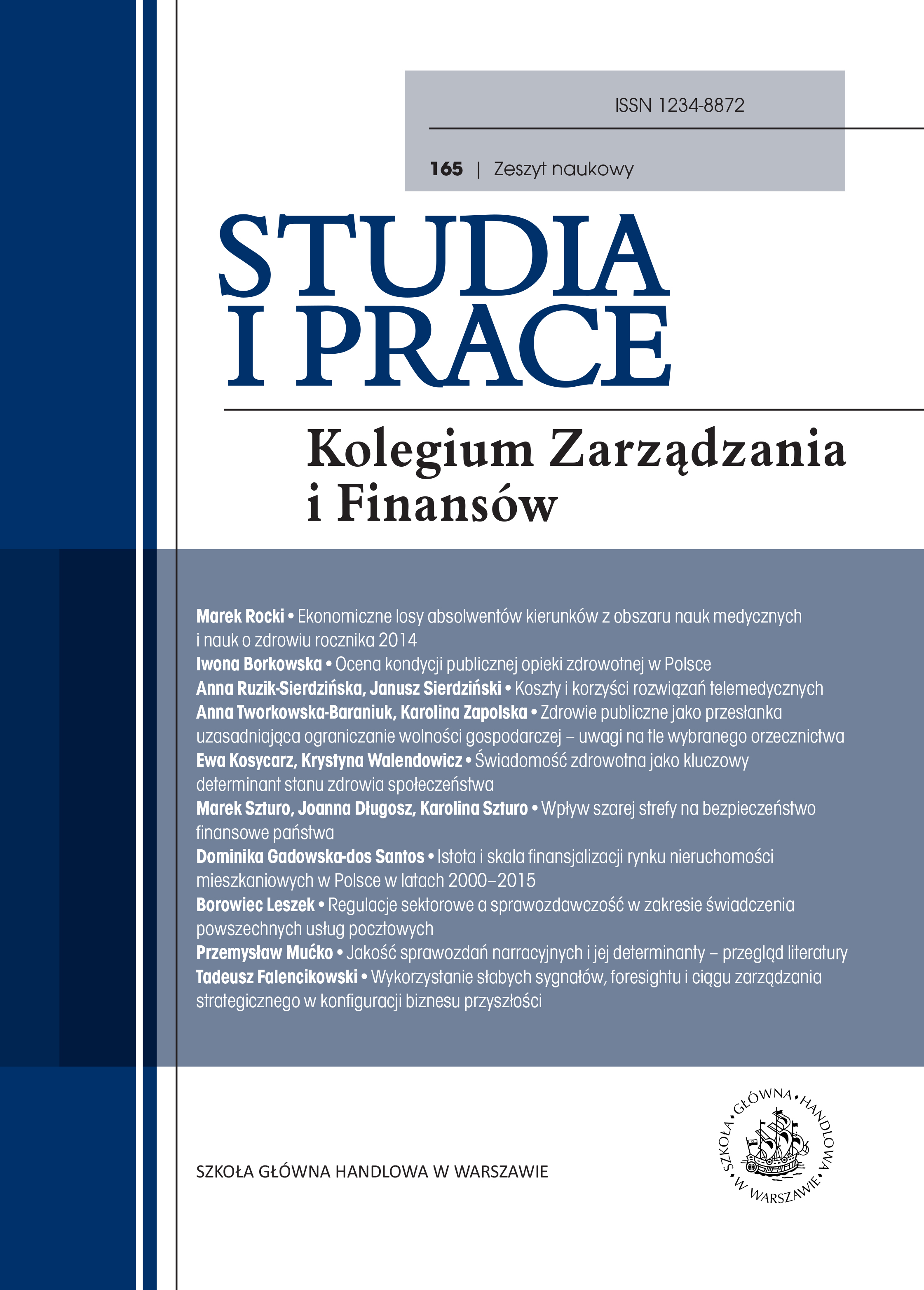Shadow Economy and its Impact upon Financial Security of National Economy Summary
DOI:
https://doi.org/10.33119/SIP.2018.165.6Keywords:
underground economy, insolvency risk, public debt, financial securityAbstract
The paper analyses the relationship between the size of shadow economy and national security. Countries where shadow economy plays a significant role can see it in low tax revenue. This reduces the government liability for taxes, increases public debt and the probability of its restructuring in the future. Our goal was to identify the link between public indebtedness, insolvency risk and the size of shadow economy as determinants of financial security of a country. The study focuses on the impact of shadow economy upon financial security of national economies. It was conducted on the group of 50 countries different when it comes to the size of their economies and shadow economy. The time-frame for the study was 5 years. Results of empirical study, in which we used regression, show significant impact of the size of shadow economy upon government’s insolvency risk, financial tensions in the system and the cost of debt servicing.
Downloads
References
2. Angrist J. D., Krueger A. B., Instrumental Variables and the Search for Identification: From Supply and Demand to Natural Experiments, „Journal of Economic Perspectives” 2001, vol. 15.
3. Balakrishnan R., Danninger S., Elekdag S., Tytell I., The Transmission of Financial Stress from Advanced to Emerging Economies, IMF Working Paper 2009, no. 09/133.
4. Cardarelli R., Elekdag S., Lall S., Financial Stress, Downturns, and Recoveries, Chapter 4 of the October 2008 WEO report, 2009.
5. Elgin C., Political Turnover, Taxes, and the Shadow Economy, Working Papers 2010, 08, Bogazici University, Department of Economics, Istanbul 2010.
6. Feige L. E., Defining and Estimating Underground and Informal Economies: The New Institutional Economics Approach, Univeristy of Winsconsin-Madison, Madison 1990.
7. Friedman E., Johnson S., Kaufman D., Zoldo-Lobaton P., Dodging the Grabbing Hand: the Determinants of Unofficial Activity in 69 Countries, „Journal of Public Economics” 2000, 76 (3).
8. Fuller W. A., Measurement Error Models, Wiley, New York 1987.
9. Hallerberg M., Wolff G., Fiscal Institutions, Fiscal Policy and Sovereign Risk Premia in EMU, „Public Choice” 2008, vol. 136 (3–4).
10. Hausman J., Mismeasured Variables in Econometric Analysis: Problems from the Right and Problems from the Left, „Journal of Economic Perspectives” 2001, vol. 15.
11. Ihrig J., Moe K. S., Lurking in the Shadows: The Informal Sector and Government Policy, „Journal of Development Economics” 2004, 73 (2).
12. Jajuga K., Elementy nauki o finansach. Kategorie i instrumenty finansowe, PWE, Warszawa 2007.
13. Panizza U., Sturzenegger F., Zettelmeyer J., The Economics and Law of Sovereign Debt and Default, „Journal of Economic Literature” 2009, 47 (3).
14. Reinhart C. M., Rogoff K. S., Savastano M. A., Debt Intolerance, „Brookings Papers on Economic Activity” 2003, vol. 34 (1).
15. Schneider F., Buehn A., Montenegro C. E., Shadow Economies all over the World, World Bank Policy Research Working Paper 2010, no. 5356.
16. Zając D., Szara strefa w handlu elektronicznym na przykładzie Allegro.pl, Studia „Prawno-Ekonomiczne” 2015, t. XCIV, s. 399.









